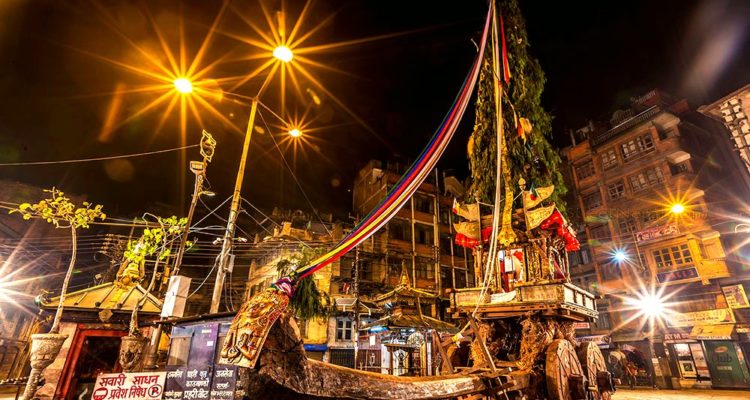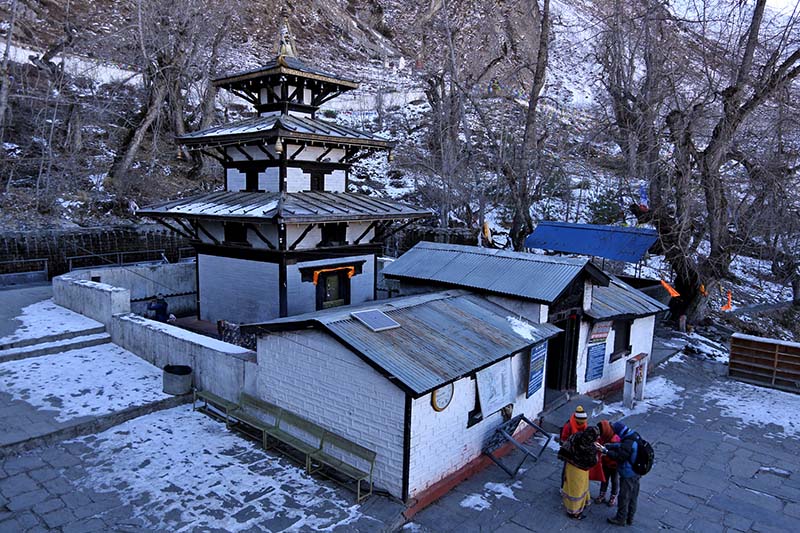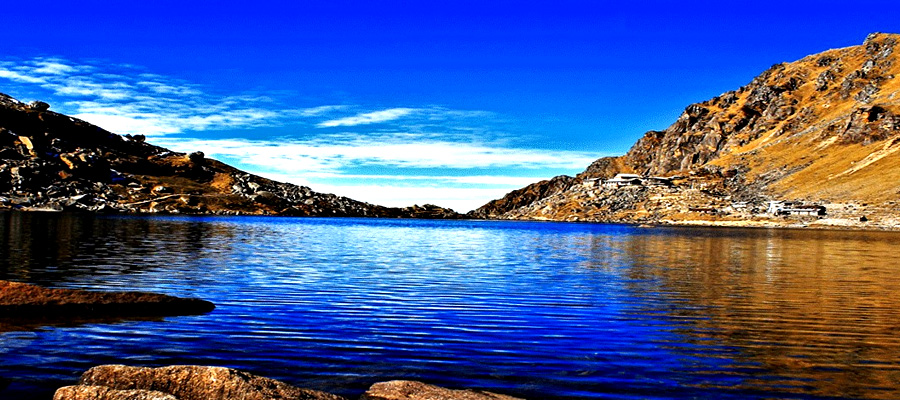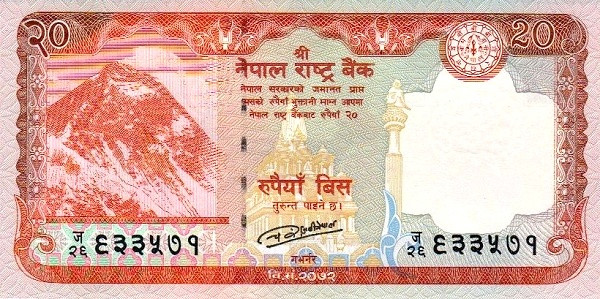
Chasok Tangnam
Chasok Tangnam is the most important festival of the Limbu, yakthung people among other festivals. This festival falls on a full moon day of the month of Senchengla or the Mangsir month of the Nepali calendar. Tangnam simply means festival in the yakthung Limbu language.

Sonam Lhosar
Sonam Lhosar is a new year festival of Tamang and Yolmo people of Nepal. It falls on the second new moon after the winter solstice which is usually the Magh Sukla Pratipada based on the eastern lunar calendar.

Christmas
Christmas (which means "The Mass of Christ") is a Christian holiday that refers to the birth of Jesus (whom Christians believe is the Son of God), and a cultural holiday for non-Christians. ... The Christmas Season (called Christmastide) ends 6 January or the Twelfth Day of Christmas, in which Epiphany is remembered. (which means "The Mass of Christ") is a Christian holiday that refers to the birth of Jesus (whom Christians believe is the Son of God), and a cultural holiday for non-Christians. ... The Christmas Season (called Christmastide) ends 6 January or the Twelfth Day of Christmas, in which Epiphany is remembered.

Dashain
Dashain also Bijaya Dashami is a festival originating from Nepal. In other parts of South Asia, it is called Dashain.Dashain is celebrated by the Hindus of Nepal and the Nepali language speaking people of the Darjeeling hills, Sikkim, Siliguri, Assam and other North-Eastern states of India and among the Lhotshampa of Bhutan and the Burmese Gurkhas of Myanmar. Many people of Nepal celebrate this festival. It is famous in Hindu region. It is the longest and the most auspicious festival in the Bikram Sambat and Nepal Sambat annual calendars, celebrated by Nepalese people, along with their diaspora throughout the globe. It is the most anticipated festival in Nepal, Bhutan, Burma, and North Indian hills. People return from all parts of the world, as well as different parts of the country, to celebrate together. All government offices, educational institutions, and other offices remain closed during the festival period. The festival falls in

Bhume puja
Bhume is the main festival of Magar communities of the Kham speaking sect. It is also called 'Nakowange' in the local term. From the ancient period, the festival has been celebrated from Ashad 1 to one week or ten days. But the preparation of the Bhume festival will proceed a month earlier. From Jestha 01, the festival opens in advance by playing the musical instruments and worshipping the nature. One the one hand there is a celebration of the storage of summer foods and on the other; they worship for the better crops of the monsoon. It is believed that if the musical instruments begin to play, then the birds and insects come out to listen the music that helps to keep the crops safe. Magar ethnic community populates the mid-hilly region. They are rich in their original culture, lifestyle and language. Magar communities are divided in three groups in terms of language use. Magar from the Eastern Kali Gandaki River is called 'BAHIYA Magarat', the western are known as 'ATHARA Magarat' a

Maghi
Maghi is the biggest festival of Tharu people, which marks the beginning of new season. The festival is celebrated for a week. Tharus clean and decorate their houses to welcome their New Year, while also performing Shakiya Naach, a special dance organised during the festival.

Eid al-Fitr
Muslims of Nepal celebrate Eid al-Fitr festival, one of the most important Islamic festivals. The festival, celebrated for one to three days, marks the end of Ramadan, the month-long fasting by Muslim community. The date of the festival is set every year according to the Islamic calendar.

Rato Machindranath Jatra
Rato Machindranath Jatra (Nepal Bhasa: बुंग द्यः जात्रा,Buṅga Dyaḥ Jātrā) is a chariot procession honoring the Vajrayani Buddhism deity of compassion Avalokiteśvara held in Lalitpur, Nepal. It is one of the greatest religious events in the city and the longest chariot festival celebrated in the country.

Ubhauli
Ubhauli (उभौली) is festival of the Kirat communities of Sunuwar, Rai, Limbu and Yakkha of Nepal , India and around the world by Kirati people celebrated every year marking the migration phase upwards towards the hilly regions when the summer season arrives. The migration from hills downwards to areas of lower altitude is called Udhauli (downwards), which is also an annual festival of these communities.[1] Sakela is the dance performed during the festival.On this Ubhauli festival day, the Kirat people pray to mother nature for healthy crops and protection from natural calamities in that year.

Indra Jatra
Indra is Lord of Rain and the king of Heaven. Jatra is procession. Indra Jatra is celebration of God Indra’s Day. Indra Jatra is festival of Kathmandu, the capital of Nepal. Some believes Indra Jatra is thanking day to lord Indra for the rain. According to others, the festival is celebrated in the honor of Bahirab, who is Shiva's manifestation and is believed to destroy evil. Indra Jatra begins every year from the day of the Bhadra Dwadasi to Ashwin Krishna Chaturdasi. It is a eight day long festival.

Faguwa( Holi)
The festival of colors, known as Holi in Nepali is called Faguwa in Tharu language. This day is celebrated with much enthusiasm and joy by spearing colors on each other, sprinkling waters on each other and playing dholak (a type of drum) and singing jogira, the obscene song.

Maha Shivaratri
Maha Shivaratri is one of the major festivals of Nepal and literally means “Night of the Shiva”. It is celebrated on the 14th day of the dark fortnight of the Māgha month, as per the Hindu lunar calendar. ... Devotees chant “Om Namah Shivay” and “Mahamritunjaya” all night praying for light over darkness. is one of the major festivals of Nepal and literally means “Night of the Shiva”. It is celebrated on the 14th day of the dark fortnight of the Māgha month, as per the Hindu lunar calendar. ... Devotees chant “Om Namah Shivay” and “Mahamritunjaya” all night praying for light over darkness.

Tihar
Tihar is one of the most important and essential competition for the Hindus festivals of Nepal and Nepali origin after Dashain. This festival lasts for five days and therefore referred to as as ‘Yama Panchak’. It is treated as the festival of lighting fixtures, and is referred to as ‘Diwali’ within the Terai area. The Newars name it ‘Swanti’, and its miles celebrated by means of diverse ethnical agencies of Hindu religion in one-of-a-kind methods. That is the competition of scrumptious meals, and is special for the brothers and sisters as nicely. On this competition, the animals or birds together with Crow, Dog, Cow and Oxen also are worshiped; in favour of the religion and utilization they’ve supplied to human beings. Among the five days of the Tihar, the primary day is the Kaag Puja. On this day, the crow is worshipped with the aid of giving it food. People go away different food cuisines in their yards or roof for the crow inside the early morning. Crow is taken into consideration as the messenger of loss of life, and due to the fact its miles believed to carry message within the early morning, human beings worship it to convey the coolest information for them. Similarly, the second day is offered to dog, the third day to cow, the fourth to oxen and the final day is dedicated to brothers/ sisters.

Chhath
Chhath parva is celebrated by natives of Mithila region of Nepal and India. This festival is dedicated to god Sun. ... The Sun, source power of nature, considered the god of energy and lord of the life-force, is worshiped in Chhath to promote well-being, prosperity and progress.

Sri Panchami
Sri Panchami, also known as Basanta Panchami, is celebrated on the fifth day of the waxing moon during the Nepali month of Magh. Every Nepali month has a Panchami festival on the fifth day of the waxing moon, and the term Panchami is derived from the Sanskrit word “panch”, meaning five.

Gai Jatra
Gai Jatra is one of the most popular festivals generally celebrated in between August-September. Even though Gai Jatra has presence throughout the country, it has most strongholds in the Newari community of Kathmandu valley. This festival has its roots in the belief that the god of death, Yamaraj, must be feared and hence worshiped.

Janai Purnima
Janai Purnima keeps the sacred meaning in Hindu community of Nepal. On this same day Rakshya Bandhan is also celebrated where every Hindu ties a sacred thread. Janai Purnima maintains the holy significance where as Rakshya Bandhan makes stronger the love and respect in between and among sisters and brothers.

Teej
Teej is a celebration of fasting in which women pray for marital bliss, well being of their spouse and children and purification of their own body and soul. It takes place on August and September. In the present context, the festival has connotation with rights of women. is a celebration of fasting in which women pray for marital bliss, well being of their spouse and children and purification of their own body and soul. It takes place on August and September. In the present context, the festival has connotation with rights of women.

Shree Krishna Janmastami
Shree Krishna Janmastami marks the celebration of the birth of Lord Sri Krishna. Lord Krishnais regarded as the 8th avatar or ‘incarnation’ of Lord Vishnu. It falls on August and September. This festival is hugely celebrated throughout the country.

Maghe Sankranti
Maghe Sankranti (Nepali:माघे सङ्क्रान्ति, Mathili:माघि, Nepal Bhasa:घ्यःचाकु संल्हु) is a Nepalese festival observed on the first of Magh in the Vikram Sambat (B.S) calendar (about 14 January) bringing an end to the winter solstice containing month of Poush. Tharu people celebrate this particular day as new year. It is also regarded as the major government declared annual festival of the Magar community. Maghe Sankranti is similar to solstice festivals in other religious traditions. Observant Hindus take ritual baths during this festival. These include Sankhamul on the Bagmati near Patan; In the Gandaki/Narayani river basin at Triveni, Devghat near Chitwan Valley and Ridi on the Kaligandaki; and in the Koshi River basin at Dolalghat on the Sun Koshi. Festive foods like laddoo, ghee and sweet potatoes are distributed. Niece and Nephew usually go to Mama Ghar and take Tika and blessing/dakshina.

Seto Machindranath
It is believed that during the rule of King Yakshya Malla, in a place called Kantipuri people used to bathe in the holy river and visit Swayambhunath this led them to heaven after death. Once Yamraj (God of Death) came to know the power of Swayambhunath and he visited the holy temple. During his return from the Temple he was captured by King Yakshya Malla and his Tantric Guru and demanded immortality and would not let Yamraj leave. So Yamraj prayed to Arya Awalokiteshwor (Seto Machindranath) to free him. The God heard his prayer and instantly appeared from the water. The god was white in color with eyes half closed. He then told the king to build a temple where Kalmati and Bagmati meet and to organize chariot procession so that the God could visit the people and bless them with happiness and long life.

Yak Festival
RUBY VALLEY, DHADING: The first-ever "Yak Festival" will take place in Ruby Valley of Dhading district in autumn.The Yak Herders' Association in the district has been collaborating with governmental, non-governmental, private and media sectors to host the festival with an aim to promote the area as a tourist destination as currently, fewer people are keeping yak.Chairperson of Yak Herder's Association, Dinesh Ghale informed that the one-day festival will take place at Pangsang in Tipling area of Ruby Valley Rural Municipality-1, between Dashain and Tihar, the Hindu's major festival. Pangsang locates above 4,000 metres, at the base of Ganesh Himal.Tipling of Dhading which borders Tibet from north and Rasuwa district from east boasts of the highest number of yak farming.The area which had only 200 yaks, a decade ago, now has become a habitat for more than 400 yaks with altogether 35 sheds. It has been reported that a total of 36 persons including 20 youths are involved in yak farming in






_Mall_919.jpg)




















































